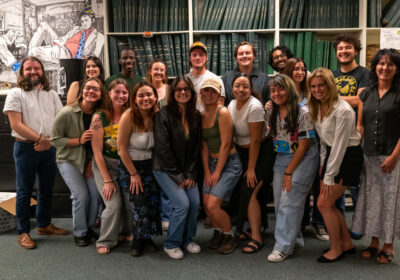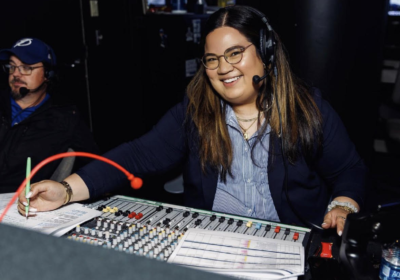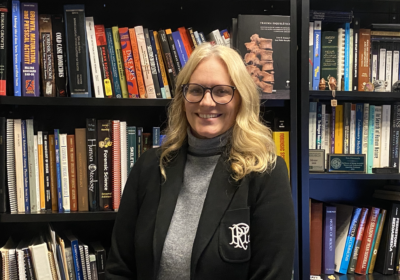Creating food for thought
Students who stop by the William and Nancy Oliver Gallery this week will find that the traditional art space now houses canned beans, gummy bears and macaroni and cheese.
“Bacchanalia 3: Forever Full,” a new exhibition that continues this week and closes Dec. 1, showcases art pieces that revolve around food.
It’s also the final project for students in The Edible Aesthetic – an interdisciplinary studio class taught by assistant professors Neil Bender and John Byrd.
“Food is the matrix of the project because it is something so shared, yet there are a lot of aspects that are overlooked,” Byrd said. “We want to explore the cultural and political associations to food.”
The class is comprised of about 25 students who must each offer a proposal for an art piece and then create one, either as an individual or within a group.
Bender said students control all aspects of the exhibition – from creating the 17 original art pieces to handling the show’s public relations and marketing.
“We just wanted to offer a provocative, rich course for the students that would stimulate both us and them to new modes of thought – about what we eat, what it looks like and all the political, social and ritualistic aspects of that,” Bender said.
For example, Byrd said students learned about food packaging and its popularity by exploring concepts by pop artist Andy Warhol.
“Goya a la Warhol,” a piece created by Rachel Matos and Kandy Lopez, displays 32 acrylic paintings of Goya bean cans. Each 8.5 by 11 inch painting shows a Goya can with different types of beans and interspersed images that range from a border security road sign’s symbol to singer Rico Suave.
Matos, a senior majoring in art, said the duo’s inspiration was Warhol’s famous Campbell Soup can prints.
“We were trying to communicate Hispanic heritage through our art piece,” Matos said. “Goya beans have … been a traditional Hispanic food. We were trying to convey a sense of tradition, labor and heritage.”
In a piece called “The Real Trix Production,” students perform in fabric-and-paper mache bunny costumes as factory workers who feed cereal onto a conveyor belt and paint the cereal with bright colors to sort into packaging boxes.
Each cereal box displays hand-painted bunnies with alternating facial expressions – happily smiling or seemingly possessed.
Sachy-Yanice Rodriguez, a senior majoring in studio art, came up with the idea for the piece and said it represents the monotony of factory work.
“This is a reference to the emotionless a person can feel doing a job such as mindlessly coloring cereal pieces day in and day out,” Rodriguez said. “I also wanted to play with the notion of food packaging masking the process of making the food. In my piece, even the cereal boxes are done lazily with marks and paint smudges – as if people also held the mundane job of repeatedly stenciling the same picture over and over again.”
Another performance piece called “Nobody Does It Like Sara Lee” blends the baked goods company with unabashed sexual imagery.
Under a wall bearing the Sara Lee logo, four glass cubes on tables display kitchen appliances and sex toys with leather leashes on top of each. A performer donning a ’40s dress and hairdo stands in front of one of the tables and offers to hit spectators with a leash.
“Gummi-couture” displays an actual edible aesthetic – a backless dress made out of wild cherry and cinnamon gummy bears is modeled on a plaster mannequin. The gummy bears are attached with sewing pins.
Bender said the class is offered in the fall semester partially because they like hosting the exhibition around Thanksgiving.
“During this holiday, people are encouraged to sit around watching football and eating food all day,” he said. “This is a different food excess.”
Bender said this semester’s Edible Aesthetic class will end with a second reception Nov. 30 from 3:30 p.m. to 5:30 p.m.
“We will plan a gathering during the last day of class and then we’ll de-install,” Bender said. “It’ll be kind of an end of classes, low-key gathering with a bit of food and drink – not nearly as extravagant as the opening reception.”
The William and Nancy Oliver Gallery is open from 11 a.m. to 3 p.m. and is located adjacent to the Fine Arts Building. For more information on “Bacchanalia 3” and the gallery’s upcoming exhibitions, visit art.usf.edu/about_us/oliver_gallery.asp.






